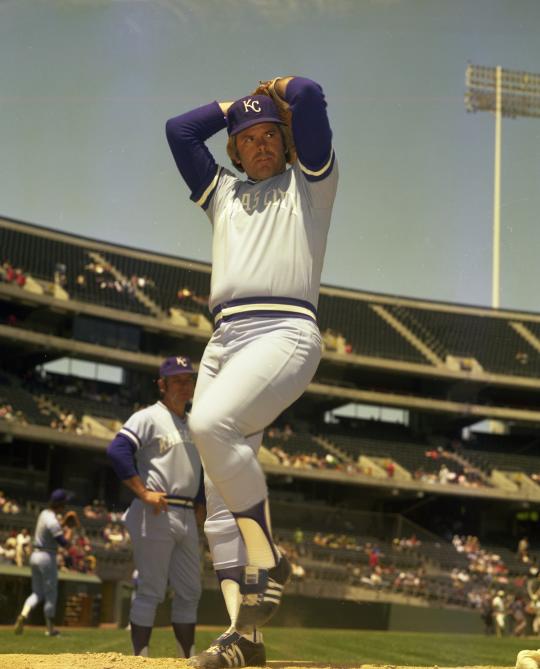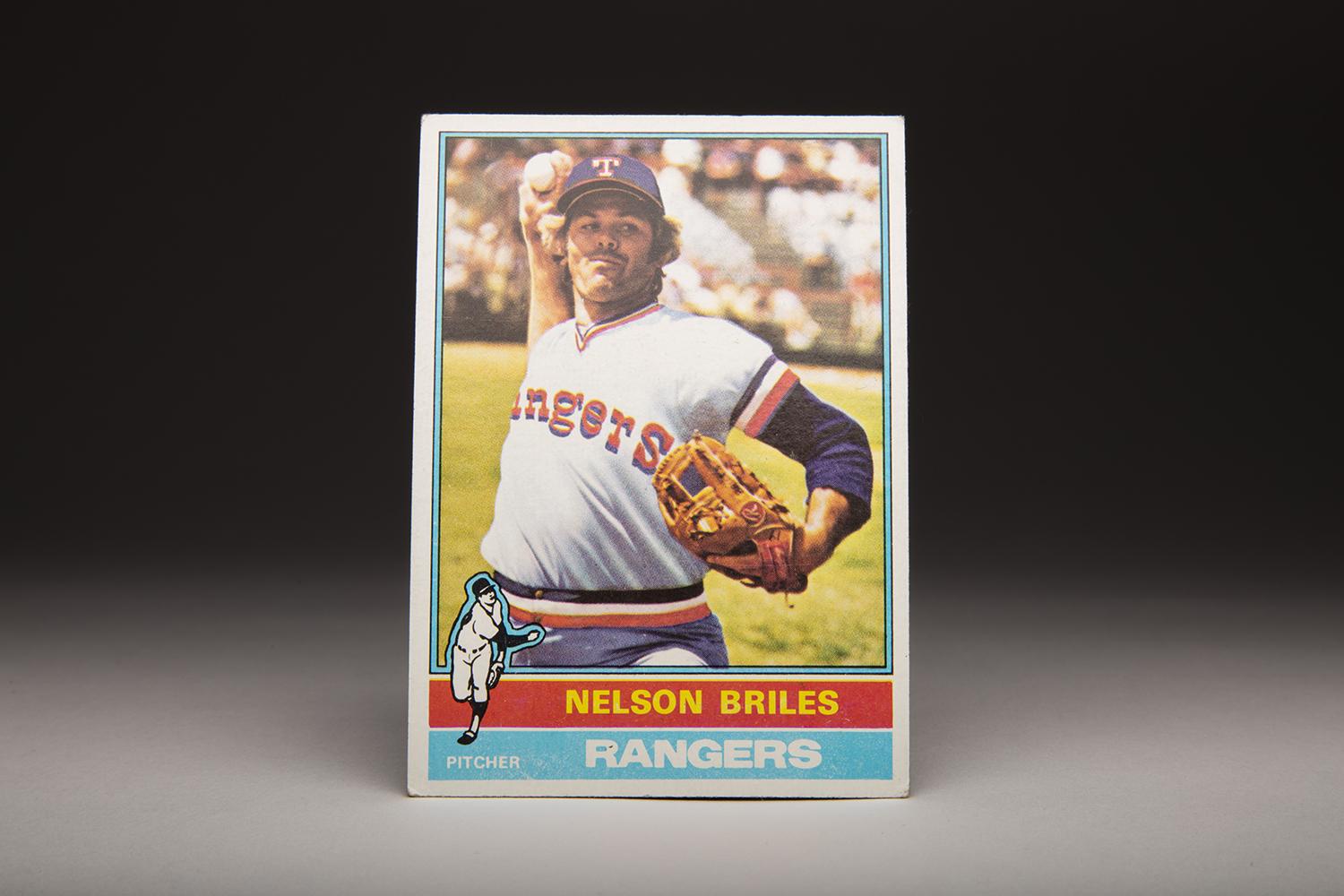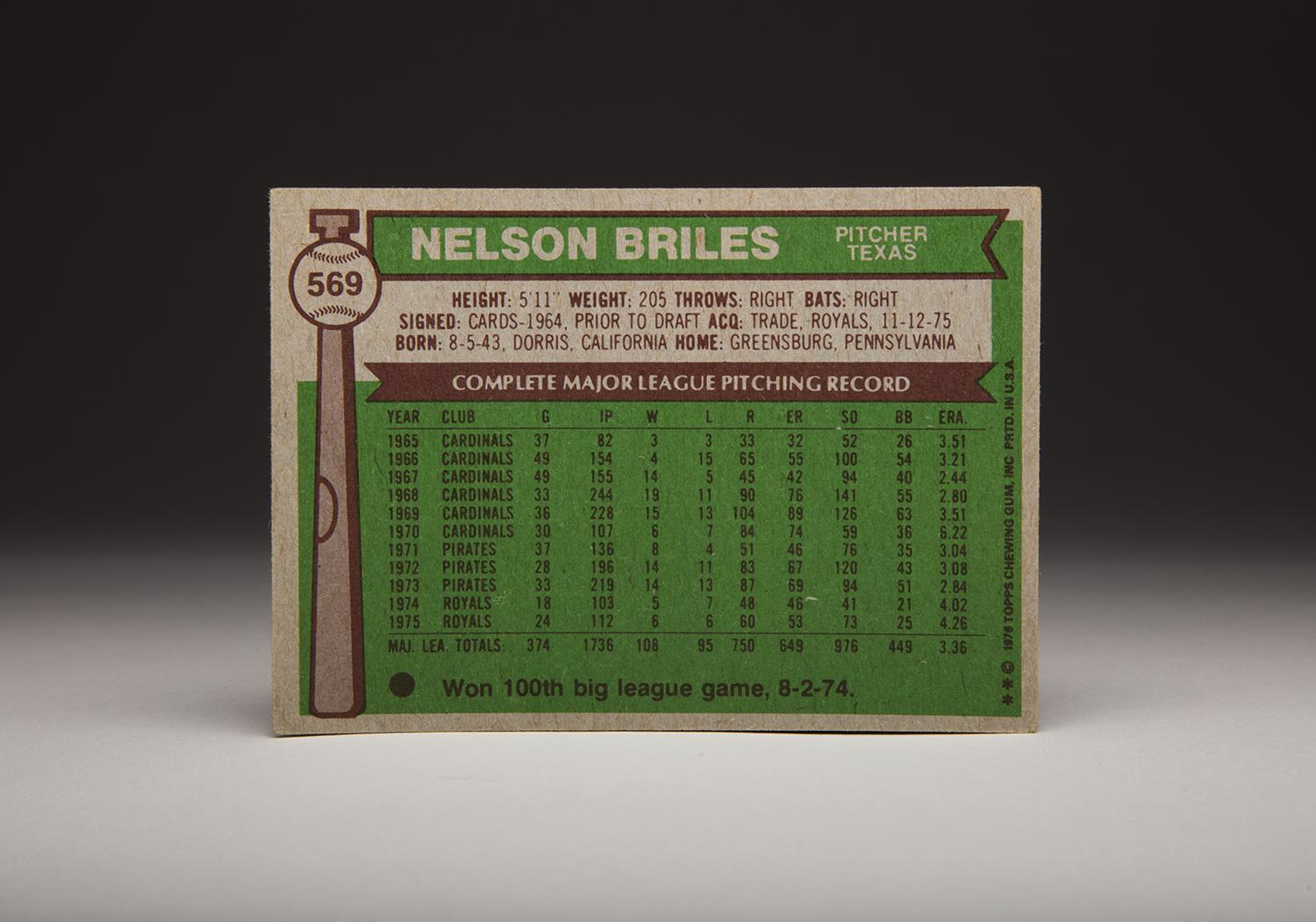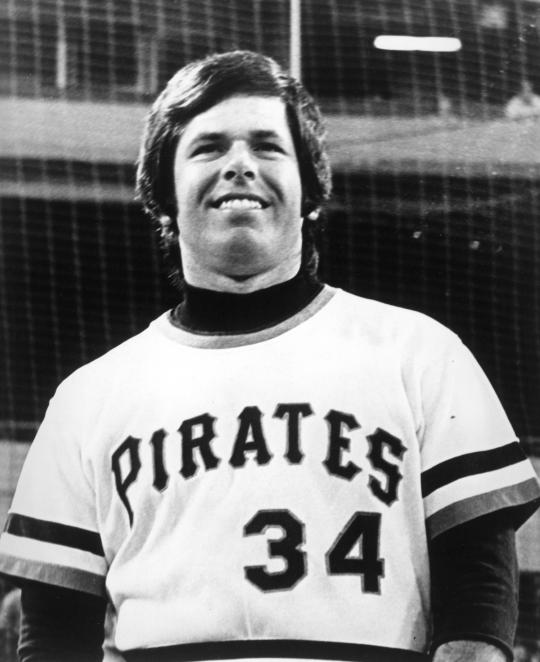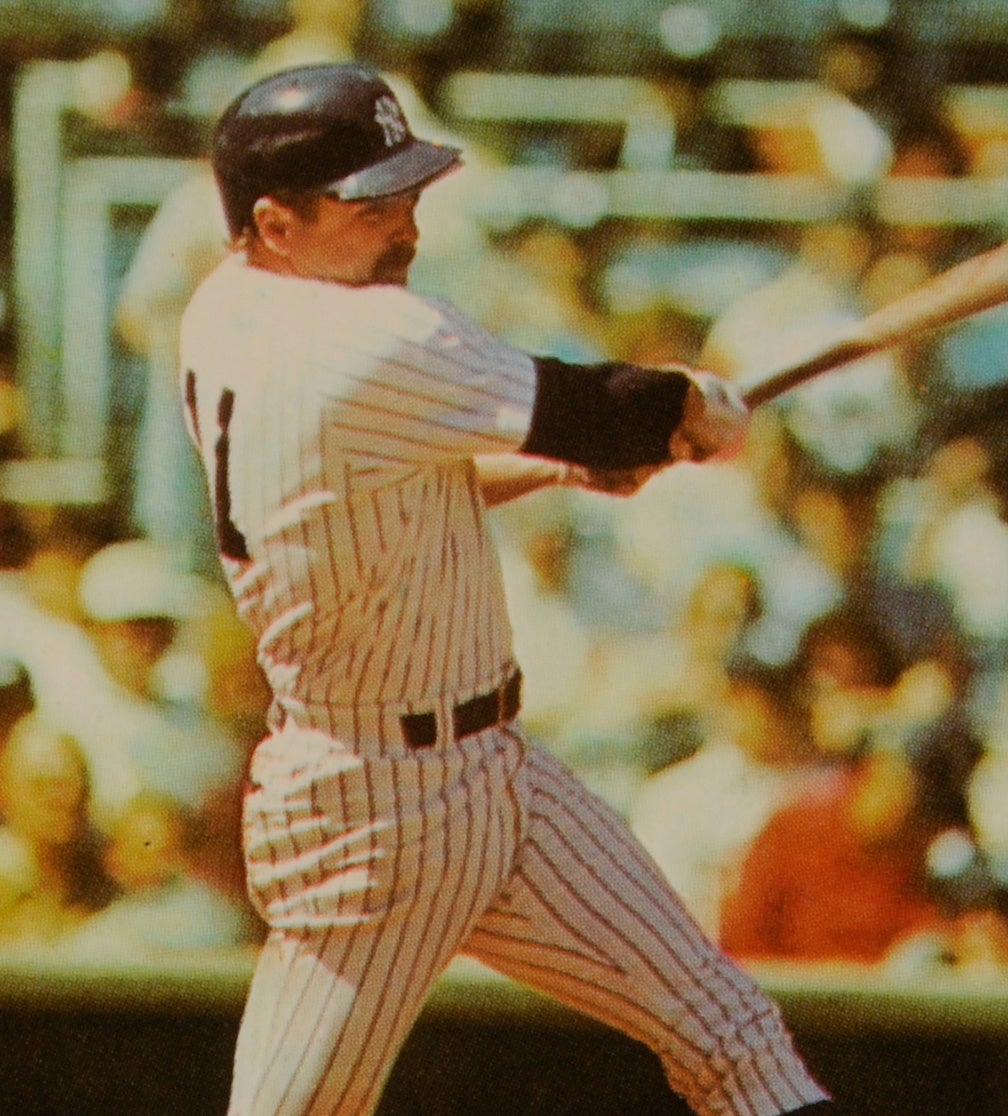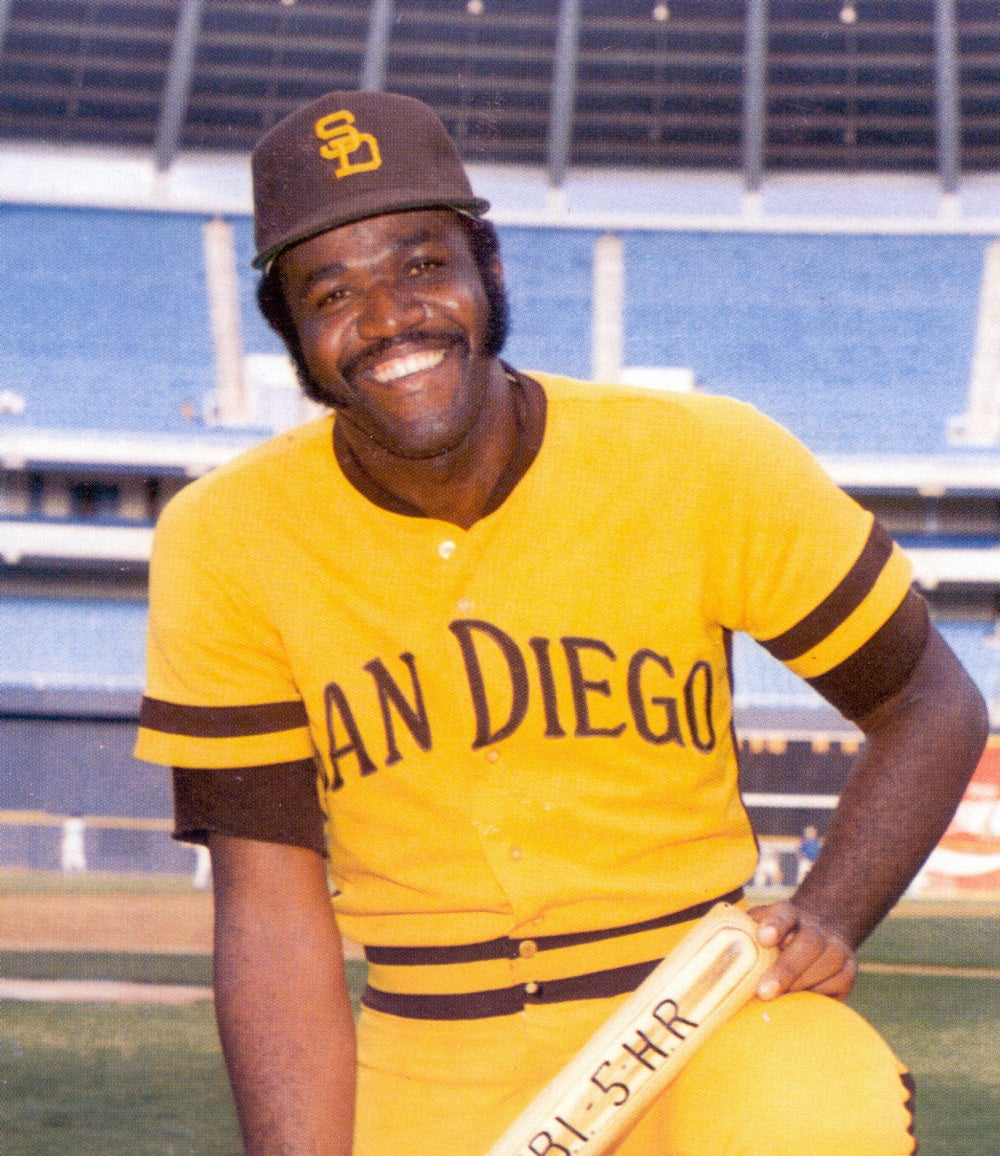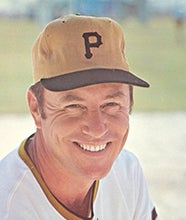Of all the pitchers available, Briles was the guy we wanted. He’s a winner… a pro… a class guy.
- Home
- Our Stories
- #CardCorner: 1976 Topps Nellie Briles
#CardCorner: 1976 Topps Nellie Briles
Hall of Fame staffers are also baseball fans and love to share their stories. Here is a fan's perspective from Cooperstown.
I can’t say that I was friends with former major league pitcher Nellie Briles; I only met him one time. But that one occasion, which occurred 15 years ago, gave me profound admiration for a special man who also happened to be a darned good pitcher.
It was in 2001, on the Friday of Hall of Fame Induction Weekend. Nellie’s good friend from his days with the Pittsburgh Pirates, Bill Mazeroski, was about to be inducted into Cooperstown. At the last moment, I asked Nellie, whom I had just learned was coming into town, if he would be willing to do an interview about Maz in our Bullpen Theater. It was a last-minute idea, not an event that would draw a huge crowd, but potentially a meaningful program that could add something to the visitors’ experience.
Briles did not hesitate. Despite it being a busy day, not to mention uncomfortably hot and humid, Briles was not merely willing to talk about Mazeroski, he was honored to do so. He did not disappoint. Briles was articulate, thoughtful and insightful during our half-hour conversation. Beyond that, he was gracious and charming. It was as if Nellie didn’t want to lose the opportunity to honor his friend on the weekend that he was entering the Cooperstown shrine. I later learned that Nellie had worked hard in advocating Mazeroski for Hall of Fame election.
After the Friday program, I thought to myself that it would be nice to interview Nellie again in Cooperstown. So well-spoken and so accommodating, Briles was just the kind of man we wanted to interview for the Hall of Fame’s video and audio archive. Sadly, we would never have that chance.
Based on that one-time experience with Nellie, I have tried to collect every one of his Topps cards. I have most of them now, except for his first three, issued in 1966, ’67, and ‘68. My favorite out of all of them is the one that came out 40 years ago: The 1976 Topps card that shows Briles throwing for the Texas Rangers.
Nellie Briles pitched for five different teams for the duration of his 14-year long career. (Doug McWilliams / National Baseball Hall of Fame)
Share this image:
The card contains a few notes of interest. It lists Briles as “Nelson” Briles, not “Nellie.” All of Briles’ baseball cards referred to him by his more formal name. As I remember, broadcasters would also refer to him as Nelson quite frequently. But people who knew Briles – his teammates, his friends – almost always called him Nellie. For an affable guy like Briles, the name of Nellie just seemed like a better fit. That’s what I called him, too.
Briles’ 1976 Topps card also falls into something of a nebulous category. It’s not exactly an action shot because it doesn’t come from an actual game; rather it’s a shot of Briles throwing on the sidelines, perhaps warming up in the bullpen. At the same time, it gives us somewhat of a close-up look at Briles. We can see his face quite clearly, which is often hard to do while the pitcher is in the middle of his motion.
If we look a little closer, we might notice that Briles’ cap and uniform have been airbrushed onto the original photo. (Briles pitched all of the 1975 season for the Kansas City Royals, before being traded to the Rangers during the winter.) Most of the time, Topps reserved airbrushing for profile, portrait, or other kinds of posed shots. It was pretty rare for Topps to airbrush a uniform for a pitcher in the middle of his delivery. All things considered, it’s one of Topps’ better airbrush efforts of the 1970s.
Briles’ major league career stretches back to 1965, when he made his debut for the St. Louis Cardinals. Pitching mostly in relief, he fared decently, with an ERA of 3.50 in 82 innings. He pitched more efficiently in 1966, but a case of bad luck produced an awful won/loss record. Splitting his time between relieving and starting, he won only 4 of 19 decisions. Still, he struck out 100 batters in 154 innings and saved six games.
Then came Briles’ breakthrough. In 1967, Briles starred as a reliever and fill-in starter. He almost completely reversed his record, going 14-5 to lead the National League in winning percentage. He lowered his ERA to 2.43, the best mark among any of the Cardinals’ relievers. Briles’ work earned him a look in the MVP voting, where he finished 15th in the balloting. Briles also took home a World Series ring, as the Cardinals upended the Boston Red Sox.
How did Briles do it? He had a decent fastball, but his out pitch was his curveball. Rather than rely on pure power, he succeeded by keeping the ball down and inducing ground balls. In 1968, manager Red Schoendienst deemed his ground ball specialist ready for a fulltime rotation job. Briles made 33 starts, won 19 of them, and logged a career-high 243 innings.
The 1968 season turned out to be so dominated by pitchers that major league baseball changed its rules following the season. Perhaps the most drastic alteration was the lowering of the pitcher’s mound, from 15 inches to 10 inches. The rules change affected Briles more than most. With his no-windup delivery and his overhand curve, Briles needed the additional height on the mound. Without it, he lacked leverage on his pitches. The curve ball suffered. So did Briles’ record. His ERA rose to 3.52, still decent, but more than a run higher than it was in 1968.
Still bothered by the lowered mound, along with a series of leg injuries, Briles’ pitching completely fell apart in 1970. Making only 19 starts, he lost his fulltime spot in the Cardinals’ starting rotation. At season’s end, his ERA rested at 6.24, completely out of line with the rest of his career performance.
The change of the mound affected Briles so badly that the Cardinals decided to trade him in the winter of 1970. Wanting to upgrade their outfield, the Cardinals agreed to package Briles with pinch-hitter extraordinaire Vic Davalillo, sending them to the Pirates for outfielder Matty Alou and a veteran left-hander, George Brunet. For the Pirates, Briles was the key to the deal.
Now with a new team, Briles changed his pitching motion. He abandoned the no-windup delivery that he had used in St. Louis, instead trying a full windup that was more conventional among pitchers of that day.
The change worked. Although Briles often ended up parallel to the ground, sometimes falling completely on his side, his new motion allowed him to regain leverage on his pitches. Pirates manager Danny Murtaugh also used Briles skillfully, pitching him in long relief most of the time, but also having him make an occasional start, as mandated by the schedule and injuries to the Bucs’ fulltime starters. Sometimes, Briles pitched short relief. Emerging as a versatile and valuable member of the staff, Briles helped the Pirates win the National League East.
While starters Dock Ellis and Steve Blass garnered most of the headlines during the regular season, Briles came out of the shadows in the postseason. With Ellis sidelined by a sore arm, Murtaugh turned to Briles to start Game 5 of the World Series. This was no easy task; the opposition Baltimore Orioles featured a stacked lineup filled with sluggers, from Boog Powell to the Robinsons (Brooks and Frank) to a young Dave Johnson.
Briles, who had been completely bypassed during the Championship Series, turned his lone Series start into a masterpiece. Shutting down the Orioles on two hits, Briles spun a complete game shutout, winning 4-0 and putting the Pirates up in the Series, three games to two. His effort remains one of the greatest World Series pitching performances of all time; an argument could be made that it ranks as the second best of all time, behind only Don Larsen’s perfect game.
Without Briles, the Pirates might not have completed their upset of the Orioles. With him, their earned their first world championship since 1960, as Briles earned his second World Series ring. Briles’ contribution to the ’71 Pirates remains his greatest legacy as a pitcher.
Based largely on that Game 5 effort, Briles became a fulltime starter for the Bucs in 1972 and ’73. He won 28 games combined, logging over 400 innings during that two-year span. Briles was arguably the ace of the Pirates’ staff, and still only 29 years old.
Briles continued to make news during the 1973 World Series, even though the Pirates had failed to make the postseason. Prior to Game 4 at Shea Stadium, Briles sang the National Anthem, impressing observers with the quality of his voice. For years, Briles had performed in nightclubs, but the World Series stage gave him his first taste of national recognition.
Of course, the Pirates cared little about Briles’ voice in terms of his value to the team. They liked his pitching and personality, making it puzzling why Pittsburgh decided to make a trade that winter. At the Winter Meetings, the Pirates sent Briles to the Royals for two utility players (Ed Kirkpatrick and Kurt Bevacqua) and a minor league prospect. The Pirates considered Kirkpatrick the key, believing that he would prove to be a valuable backup to catcher Manny Sanguillen.
The trade was not popular with the other Pirates players or the team’s fan base. But the Royals were thrilled, particularly their manager, Jack McKeon. “Of all the pitchers available, Briles was the guy we wanted,” McKeon told Kansas City sportswriter Joe Heiling. “He’s a winner… a pro… a class guy.”
The Royals could not have known that Briles would hurt his elbow in 1974, limiting him to 18 games in his first summer with the Royals. He wasn’t quite right in 1975 either, as he was limited to 16 starts.
Believing that Briles was not the same pitcher as in his Pittsburgh prime, the Royals dealt him to the Rangers for speedy infielder Dave Nelson. Briles’ arm seemed to recover in Texas. As the team’s No. 3 starter, he made 31 starts and pitched 210 innings, even though he had lost mileage off his fastball. Becoming more of a finesse pitcher, Briles managed to lower his ERA to 3.26.
The resurgence did not last. Briles struggled in the first half of 1977. His trade value diminished so much that the Rangers ended up waiving Briles in September. The Orioles put in a claim, costing them only $25,000, but he pitched poorly in two games before the season came to an end.
By 1978, it was evident that Briles was done. He made 16 more appearances for the Orioles, but his arm was essentially shot. At first, the Orioles kept him on their 40-man roster, but come January, they decided that it was time to cut him loose. Early in 1979, Briles received his release. The New York Mets invited him to Spring Training, but he failed to make the Opening Day roster. At 34 years old, it was time for Briles to head home.
For a man of Briles’ intelligence and talents, the end of his playing days only opened the door to other opportunities. As a singer, Briles had already recorded a single. A gifted public speaker, he seemed like a perfect candidate to do broadcasting work. He also had contacts in Hollywood, laying the groundwork for a possible acting career. As an added bonus, Briles brought a touch of comedy to the table. He performed imitations of celebrities. One was a mimic of comedian Paul Lynde, the star of Hollywood Squares. The other was an imitation of President Richard Nixon. Both renditions produced plenty of laughs, both in the clubhouse and on stage.
Briles dabbled in many of these areas, but his first love remained baseball, where he broadcast for both the Pirates and the Seattle Mariners. Ultimately, he returned to the Pirates as their director of corporate projects. He also did lots of work in organizing the team’s extensive alumni association, along with Sally O’ Leary, who passed away earlier this year. Nellie and Sally made the Pirates’ alumni group one of the best in baseball.
Briles continued his good work through the early days of 2005. In February of that year, he attended the Pirates’ annual alumni golf tournament in Orlando, Fla. Nellie didn’t just help organize the event; he liked to play in the tournament. While playing golf, Briles suddenly collapsed. He suffered a massive heart attack, one that took his life at the age of 61.
Nellie’s death devastated baseball, from the Pittsburgh community to us folks who knew him in Cooperstown. It was only four years earlier that I had met and interviewed Nellie, who seemed as vibrant and as full of life as anyone.
More than a decade later, I still regret not having had the chance to meet up with Nellie Briles a second time. Then again, I was lucky enough to meet him once, to learn about his admiration for Maz and learn more about his own career in the game. When one makes a first impression as strong as Nellie did, it stays with you forever.
Bruce Markusen is the manager of digital and outreach learning at the National Baseball Hall of Fame


